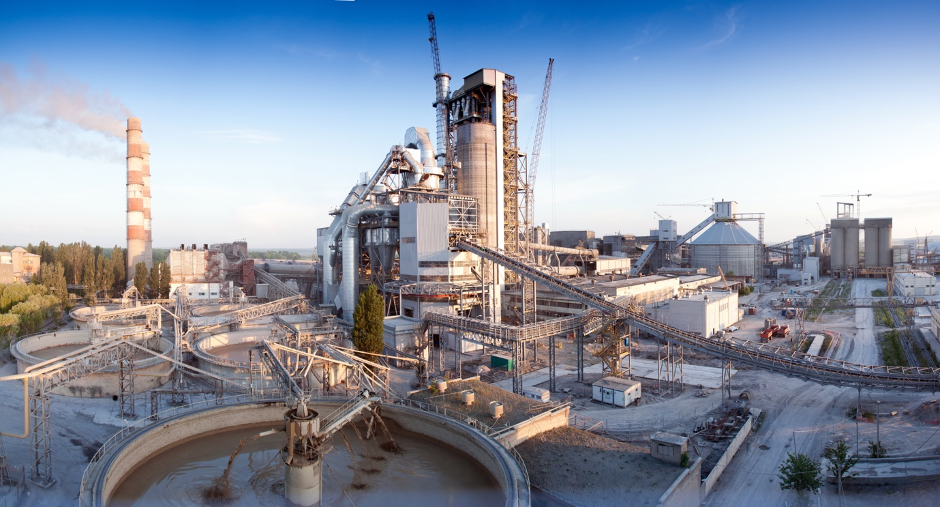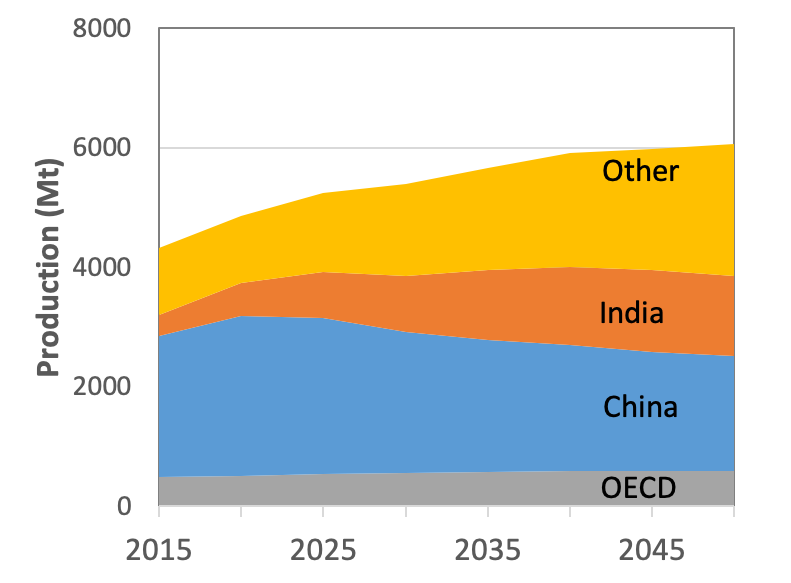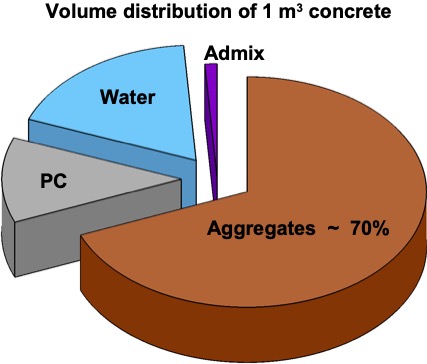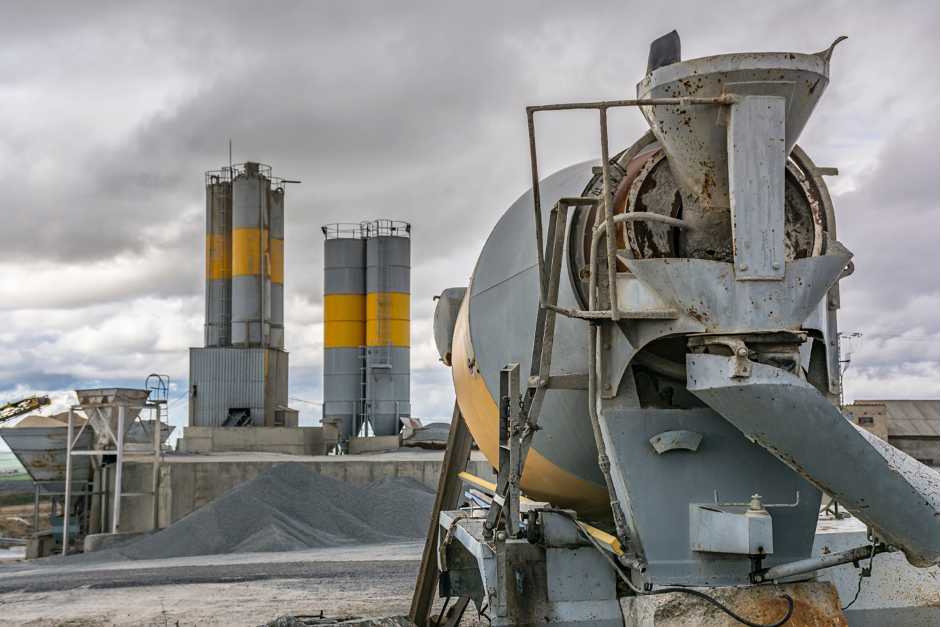
Portland cement (PC), a combination of clinker (95%) and gypsum (5%), is the product manufactured in largest on a mass basis, and it is the binder used to produce concrete. We use enormous quantities of PC every year (over 4000 million tons now) and thus PC is responsible for about 8% of manmade CO2 emissions and 7% of the industrial energy use. The demand for cement will continue to increase in decades to come, particularly in emerging regions such as India, Africa, Southeast Asia and Latin America.

Projected demand for Portland cement up to 2050. Reproduced from the UNEP Eco-efficient cements report (2017).

Concrete is essentially a two-phase material in which solid inclusions (sand and aggregates) are held together in the hardened state by a binder made of a cement-rich hydrated paste (cement, water, and included air). Concrete is the second most used substance by mankind after water on a mass basis. It is the only material on Earth that can be produced in the volume required to meet the current and future demand of construction. It is not only widely available, but it is also cheap, easy and safe to use, as well as versatile and durable. There is no other material that can replace it that satisfies all of these qualities and consequently, concrete will remain the cornerstone of human development for decades and centuries to come.
Modern concrete also contains chemical admixtures. These are organic or inorganic molecules that added in very small amounts compare to the other constituents (leading to their usual nickname as “spices of concrete”), can significantly modify the properties of concrete. Hydration activators or accelerators can help to increase early strength by promoting the hydration of clinker and the reaction of SCMs, while superplasticizers (SP) are additionally used to control rheology (flow and flow retention). Superplasticizers are polymeric dispersants used in cementitious materials to reduce yield stress at a constant solids content. The latest SPs are polycarboxylate-ethers (PCEs), and they offer versatile chemical structures and excellent water reduction capability and are the most used type of superplasticizer today with yearly productions estimated at 2-5 Mio tons.
